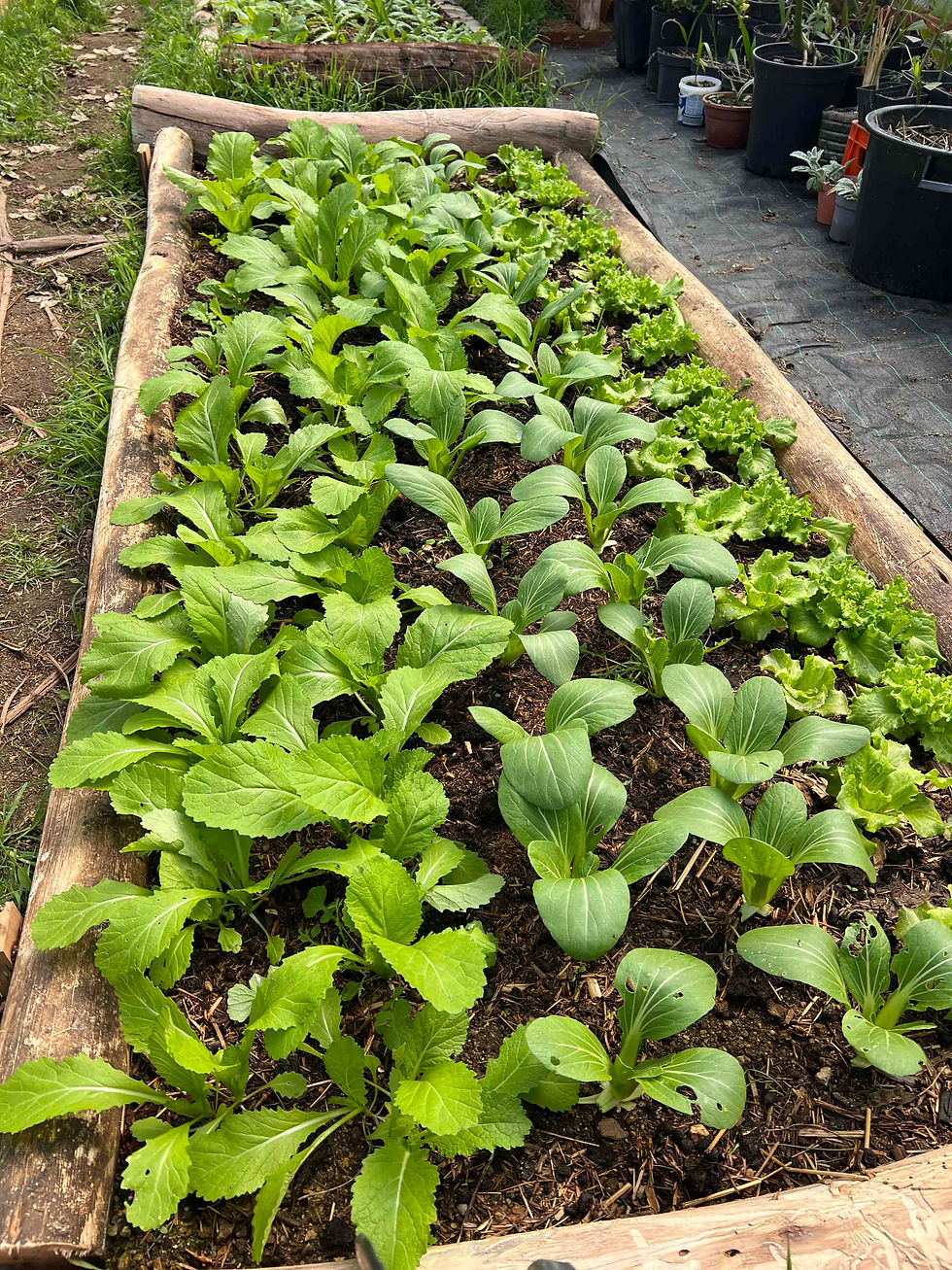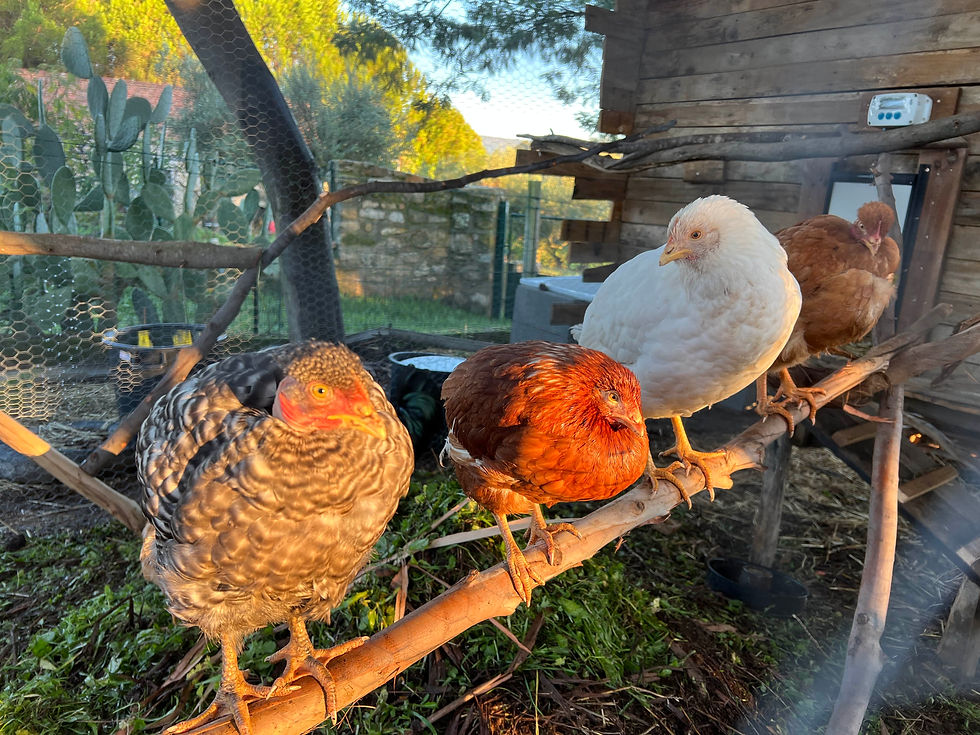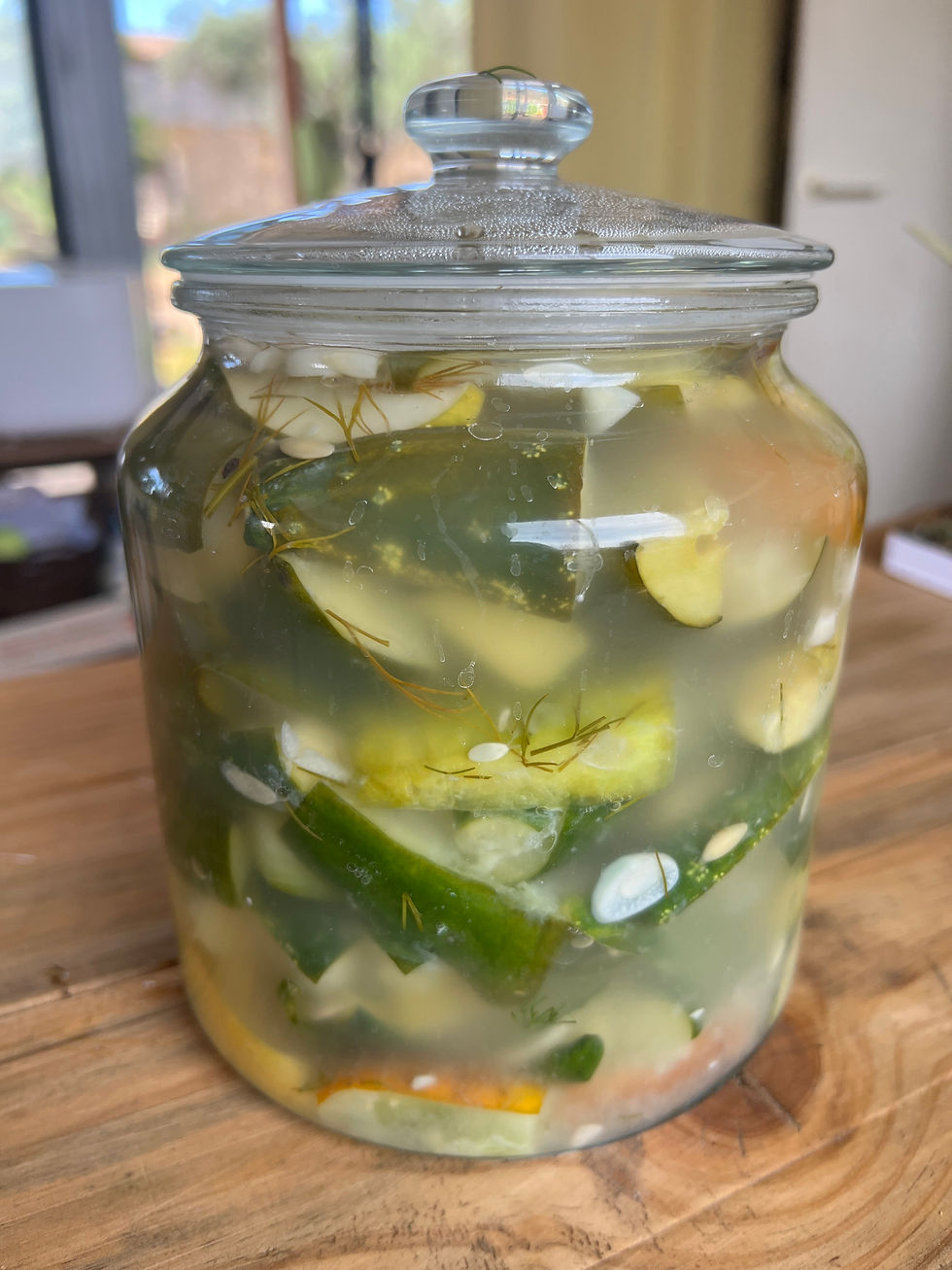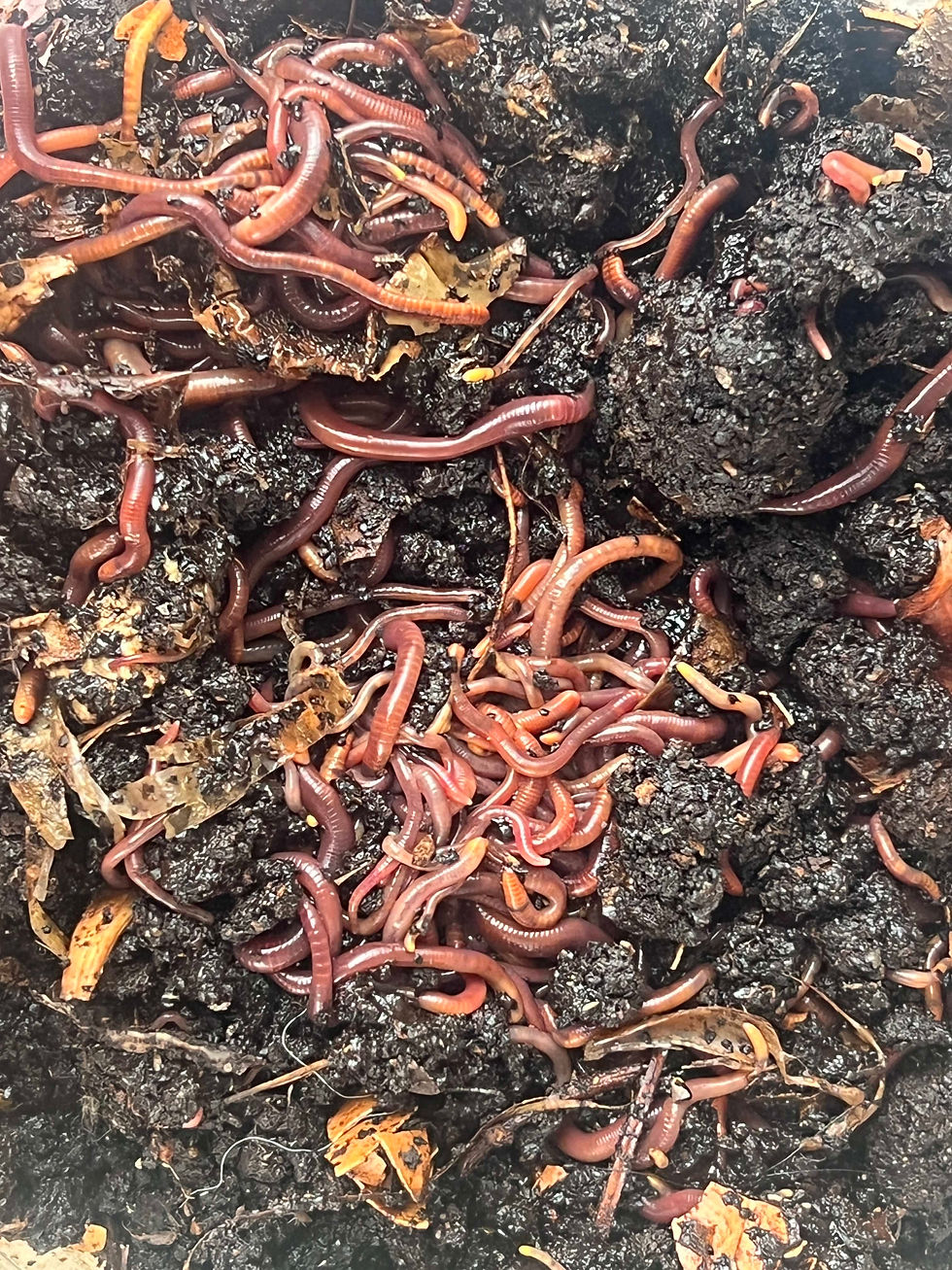The Complete First-Year Beginner Homesteading Timeline: What to Do Each Month (The Honest Version)
- Herman Kraut

- Jul 3
- 11 min read
Welcome to the wild, unpredictable, and rewarding world of homesteading. If you’re here, chances are you’ve either just stepped onto your new land, or you’re deep into the YouTube rabbit hole, dreaming of the off-grid life. Either way, you’re in good company. This post is your month-by-month guide for your first year of homesteading, grounded in lived experience, not fantasy. It’s honest, resilient, and deeply practical.
When we bought our land in early 2020, we were full of ideas and vision. Due to global events, we couldn't return for two more years. But those years weren’t wasted. We studied, we listened, we dreamed. Books, podcasts, and permaculture videos became our daily fuel. So when we finally arrived, tools in hand and hearts on fire, we planted trees... before installing a water system. Lesson learned. Setbacks like this have shaped every season since. And we’re still learning, still growing—like our garden, only more stubborn.

As a farmer once said on a podcast I’ll never forget: "I don’t have 40 years of experience. I have 40 different seasonal experiences." That’s the spirit of homesteading. You don’t master it, you adapt to it. With that in mind, let’s break down what you should expect month by month in your first year. Adjust tasks based on your climate. Northern homesteaders may shift planting earlier.
Month 1: Vision, Audit & Immediate Fixes (aka "The Reckoning")
"Observe before you act. Fix before you build."
The first month of homesteading sets the tone for everything to come. You’ve just arrived, excited, overwhelmed, and staring at a to-do list longer than a roll of drip tape. This is the season of slowing down to speed up later. Take the time to walk your land at different times of day. Where is the sun strongest? Where does water collect? Which areas feel sheltered or exposed? This kind of observation becomes the foundation for zoning decisions and infrastructure placement.
Rather than jumping into big builds, fix what’s broken. Patch the roof, mend the fence, and secure dry storage (our shipping container saga taught us that quickly). Document everything. Your future self, and your content strategy, will thank you.
Key Tasks:
Walk the land. Observe sun, slope, drainage, wind. Repeat as often as possible.
Inventory all infrastructure: shelter, water, power, waste.
Build or repair fencing. Secure tools and dry storage.
Sketch a basic zoning plan.
Start documenting everything.

Must-Have Tools for Getting Started
My first-ever permaculture-related book purchase was the "The Resilient Farm and Homestead by Ben Falk". This book opened my eyes to design resilient ecosystems and it remains a cornerstone for anyone planning to build a self-sufficient future.
Discover how we tackled the fundamentals in our post "Building the Off-Grid Basics—Fences, Power, and Resilience", including the lessons we learned the hard way.
Month 2: Water, Soil & Shelter (aka "The Infrastructure Month")
"Water before everything."
Month two is when romanticism meets reality. You quickly realize that no amount of soil amendment matters if you can't water your plants consistently. Prioritize water systems: repair leaks, install rain gutters, and get those barrels or tanks in place. It’s also the time to begin building the soil, your most valuable long-term asset. Layer mulch, apply compost, and let nature start working its magic.
This is also a great time to build animal shelters or improve human ones. Whether it’s a mobile chicken tractor or a basic shed, everything starts with structure. Don’t forget to secure your fencing, too. Especially before you bring in animals or start planting. Without solid infrastructure, everything else suffers.
Key Tasks:
Fix leaks, install gutters, set up rainwater catchment or greywater systems.
Build compost bins and begin soil improvement with mulch or cover crops.
Build or upgrade dry storage, shelters, and tool stations.
If you skipped fencing, now’s the time to catch up.

Kraut’s rough start. Mimosa trees ruling, IBC totes and barrels ready, prepping for the irrigation fight.
Essential Infrastructure Tools
We rely on these solar outdoor lights to light the path to our compost toilet and front entry. Waterproof, motion-sensing, and mounted in minutes. Perfect for any homestead infrastructure.
Month 3: Planting the Future (aka "Start Growing or Regret It")
"Grow roots now. Fast crops, deep impact."
This is the action month—the garden begins. With winter behind you, the soil warms and planting takes center stage. Direct-sow hardy crops like radishes, peas, and leafy greens. Indoors or in trays, start your warm-season favorites like tomatoes and peppers. This is also when pest pressure begins to rise, so prepare organic defenses in advance.
Beyond the garden, start building trellises and paths. Set up worm bins or compost tea stations. Think of this month as laying the biological foundation for the rest of your homestead. The earlier your soil and plants get established, the more resilient they’ll be come summer.
Key Tasks:
Direct sow cold-weather crops: leafy greens, onions, carrots, peas.
Start warm-season crops in seed trays.
Set up worm bins, mulch paths, and install trellises.
Prepare for garden pests early. Prevention is easier than reaction.

Gardening Essentials:
We swear by Containerwise seedling trays. Three years in, no cracks, no complaints.
Month 4: Animals, Automation & Expansion (aka "Should We Have Done This?")
"Add only what you can feed, water, and secure."
It’s tempting to go big, but resist the urge to scale too fast. If you’re introducing animals like chickens or ducks, do it now, but make sure their shelter, feed, and water needs are 100% covered first. You’re not just caring for them; they’re now integral to your garden, compost, and pest control systems.
Automate where you can: drip irrigation, self-feeders, solar timers. These small upgrades will save you time and sanity during the hectic growing months. Meanwhile, transplant summer crops into your prepared beds. Your garden should be buzzing with life, and activity.
Key Tasks:
Build your chicken coop or duck shelter.
Install drip irrigation or watering systems.
Transplant summer crops: tomatoes, peppers, basil.
Start preserving early harvests: dehydrating greens, freezing peas.

Livestock and Automation Tools
The ChickenGuard Solar Automatic Door Opener gave us peace of mind and freedom of movement, set it and forget it. Our hens are safe and tucked in, even when we're not home.
Month 5: Weeds, Weather, and Wins (aka "Chaos Season")
"Mulch like your life depends on it. It kind of does."
By now, the garden is in full swing, and so is the chaos. Weeds grow faster than crops, pests make daily appearances, and the sun becomes both a gift and a threat. This is when your earlier mulching pays off. Add more where needed and prune plants for airflow and sun exposure.
Protect vulnerable crops with shade cloth or companion planting. Check your animals daily for signs of heat stress. And most importantly, harvest and celebrate your wins. Even a single bowl of homegrown salad greens is proof you’re doing something right.
Key Tasks:
Stay ahead of weeds with cardboard, straw, or wood chip mulch.
Set up shade cloths for heat-sensitive crops.
Pest patrol becomes a daily ritual. Ducks and neem oil help.
Celebrate early harvests. Record what worked (and what didn’t).

Weed and Pest Control Favorites
We recommend the book “Weedless Gardening” by Lee Reich for its no-nonsense, soil-first approach to weed suppression. Less weeding, more growing. Yes, please.
Month 6: Harvest & Heat (aka "The Wall")
"Preserve now or perish later."
High summer hits hard. This is the make-or-break period where many new homesteaders feel overwhelmed. Your plants need constant water, your crops are coming in heavy, and the heat is relentless. It’s also when you start to realize the true meaning of abundance, and how quickly it can rot if not preserved.
Start canning, drying, fermenting. Anything to extend the life of your harvests. Set up systems to rotate crops and replenish beds with compost or cover. And don’t forget self-care: heat exhaustion is real, especially off-grid. Hydration and shaded rest are critical.
Key Tasks:
Start serious food preservation: fermenting, drying, canning.
Harvest daily. Rotate crops and replant quick wins.
Inspect infrastructure: water leaks, sun damage, broken tools.
Hydration is key—for you and your plants.

Preservation Must-Haves
Thanks to our solar setup, a friend’s food dehydrator runs currently on our farm with “free” power. We recommend the Cosori Food Dehydrator for its stainless build and compact footprint.
If you want to go fully off-grid, Solar Brother’s solar dryers are functional, efficient, and plastic-free.
Month 7: Maintenance & Mastery (aka "Find Your Groove")
"Don’t expand. Improve."
You’ve made it past the midway point—and you’ve learned a lot. Now’s the time to refine your systems. Adjust drip lines, rotate compost bins, improve animal routines. Use your journal or logs to spot patterns: are certain crops thriving in unexpected places? Are some tools saving you hours?
This is also a good time to plant fast-maturing late crops and to begin planning for fall. If something hasn’t worked, change it. This is the month to move from doing things by necessity to doing them by design.
Key Tasks:
Dial in existing systems. Tweak irrigation, compost, feeding routines.
Sow late crops (beans, squash, kale).
Add mulch, compost tea, or biochar to tired beds.
If using animals for rotation or compost, adjust zones now.
By Month 7, your first-year beginner homesteading skills start sharpening. Tweak what’s working, ditch what’s not, and own your progress!

System Optimization Tools
Tools, books, seeds, gear. We’re constantly curating everything we use and love on our Self-Sufficiency Toolkit. Check back often, our list grows with each season.
Month 8: Fall Prep & Fire Mitigation
"Plant for fall. Prepare for flame."
Late summer is your transition point. Start planting fall crops like kale, broccoli, and carrots. Simultaneously, it’s fire season in many climates, especially Mediterranean ones. Clear dead brush, maintain defensible zones, and check that your water sources are accessible and reliable.
Use this month to collect seeds, compost dead plants, and reset your beds. The fall garden will often grow more steadily and reliably than your summer one. Take advantage.
Key Tasks:
Plant fall crops: brassicas, roots, leafy greens.
Trim dry brush and improve firebreaks.
Harvest seeds from your best plants.
Begin composting end-of-season plants.

Fire Prep and Planting Essentials
Surviving Wildfire: Get Prepared Handbook for Homeowners – This practical guide by Linda Masterson is a must-read for homesteaders in fire-prone areas. It offers step-by-step advice on creating defensible spaces, preparing evacuation plans, and protecting your property. Perfect for Month 8’s focus on fire mitigation.
Month 9: Abundance & Transition
"Sow cover. Share bounty."
With the weather mellowing, your fall garden begins to shine. Harvests resume and cool-loving crops thrive. It’s also time to plant cover crops like vetch, mustard, and clover to feed your soil over winter.
Preserve what you can, share excess with neighbors, and begin taking notes for next year’s plan. Which varieties thrived? Which didn’t? What would you do differently with more time, water, or fencing? Reflection begins here.
Key Tasks:
Harvest late-season crops.
Plant cover crops (mustard, clover, vetch).
Start mapping next year’s expansion based on what worked.
Store seeds, sharpen tools, reflect on wins and failures.

Soil and Planning Tools
For tidy, dry seed storage, try this handy Seed Organizer Binder and suitable Seed Saving Envelopes—both are compact, affordable, and built to last.
Month 10: Cold Prep & Repairs
"Tighten, tarp, test."
Fall turns quickly to early winter. Now is the time to winterize animal shelters, seal gaps in your cabin or shed, and protect sensitive perennials. Cover beds with mulch or tarps, disconnect hoses, and test your backup power or heating system.
This month is less about building and more about battening down the hatches. Winter may not hit all at once, but when it does, you’ll be glad you started now.
Key Tasks:
Insulate animal shelters, seal windows, check roofs.
Protect sensitive perennials or young trees.
Stock firewood, test backup power, inventory stored food.
Deep clean tools and pack seasonal gear.
Winter Prep Essentials
Keep your shovels, pruners, and axes in top shape with this easy-to-use Garden Tool Multi-Sharpener from Sharpal. Sharp tools save time and effort during winter prep.
Month 11: Reflection & Repair
"Slow down, look back, prepare ahead."
With most of the physical work done, turn inward. Reflect on what worked and what didn’t. Go through your journals, photos, and data. Clean and repair tools, organize your workspace, and start drafting plans for the next growing season.
This is also a good time for quiet projects—reading, sketching next year’s garden layout, or developing new off-grid skills.
Key Tasks:
Journal your year. What failed? What worked?
Update garden maps with real results.
Repair broken systems, build wishlist for next year.
Rest and plan indoor projects (book reading, seed catalogs).
Further Reading Suggestions for the Slower Time of the Year
Winter’s quieter pace is perfect for diving into books that inspire and inform your homesteading journey. These three reads will help you reflect on your first year, plan for the next, and deepen your self-sufficiency skills. Curl up with a cup of tea and let these pages fuel your dreams for spring.
The Backyard Homestead by Carleen Madigan – A comprehensive guide to homesteading basics, covering gardening, animal care, and food preservation. Perfect for reflecting on your first year and identifying areas to improve.
The Old Farmer’s Almanac 2025 – A timeless resource with planting calendars, weather forecasts, and homesteading tips. Use it to map out next year’s growing season with confidence.
The Self-Sufficient Life and How to Live It by John Seymour – A classic that dives deep into the art of self-reliance, from gardening to crafting. Ideal for dreaming bigger and honing new skills during the off-season.
Planning and Reflection Tools
Rocketbook Smart Reusable Spirale Notebook – Jot down reflections, garden maps, and plans in this eco-friendly notebook. Digitize your notes with the app for easy organization.
Moleskine Classic Hardcover Notebook – A durable, high-quality journal for recording your homesteading journey. Its sturdy pages are perfect for sketching garden layouts or noting lessons learned.
Burpee Seed Catalog Subscription – Get Burpee’s latest seed catalog delivered to your door. Packed with heirloom and hybrid varieties, it’s a must for planning your 2026 garden.
Month 12: Planning, Rest & Celebration
"Celebrate the chaos. Dream the next cycle."
You made it. One year in, you’ve faced nature’s highs and lows and you’re still standing. That deserves celebration. Host a harvest meal, share your story online, or simply sit quietly in gratitude. Then, start dreaming.
Order seeds, draw next year’s plans, and set intentions—not resolutions—for the seasons ahead. This is not the end of a journey, but the beginning of a deeper one.
Key Tasks:
Host a small feast or digital recap.
Order seeds, set budgets, create vision boards.
Reflect on how far you've come. Revisit Month 1 photos.
Start dreaming bigger. You’ve earned it.

Dreaming and Planning Essentials
Cork Board Vision Board Kit – Visualize your 2026 homestead goals with a sleek cork board, perfect for pinning your dreams, from garden layouts to infrastructure plans; note that it doesn’t include pins, twine, or clips. Pair it with these Wood Push Pins, whose natural wooden aesthetic adds warmth and durability to secure your inspirations on the board.
Herman’s Tough Kraut Fixes: Common First-Year Beginner Homesteader's Challenges
Every basic infrastructure homestead project has its challenges, but with these troubleshooting FAQs, you’re ready to tackle them! Drawing from our off-grid life in Portugal, where we managed to set up our basic infrastructure on our homestead, here are answers to common questions to keep your system afloat. These fixes are straight from the Tough Kraut playbook—practical, tested, and built for self-sufficiency. Got a question I missed? Leave a comment below, and the Kraut Crew will dive in to help!
Q: Animals Destroying Plants?
A: Invest in sturdy, high-enough mesh fencing. Regularly check for gaps and reinforce weak spots. Consider electric fencing for extra deterrence if needed.
Q: Lack of Water Access?
A: Use rainwater harvesting and manual hauling in the early stages. Plan for a reliable pump and storage system as soon as possible.
Q: No Shelter or Storage?
A: Start with mobile or modular structures like trailers or shipping containers. These are quick to set up and can be repurposed as your homestead grows.
Q: No Electricity?
A: Portable solar panels and power banks are an affordable, flexible option. Gradually upgrade to a permanent system as your needs and budget allow.
Q: Expanding Infrastructure?
A: Plan your site layout carefully, leaving room for future buildings and systems. Involve the community for advice and shared resources—collaboration makes every project easier.
Resilience Is the Real Crop
Homesteading doesn’t reward perfection. It rewards adaptation. You’ll fail, you’ll learn, and you’ll grow. Season by season. Whether you’re planting tomatoes or building compost toilets, it all comes down to one thing: showing up. With your hands, your heart, and your stubbornness.
We’re still showing up. And after three years, we’re still learning. Still failing. Still harvesting resilience.
If you’re starting your journey now, remember: your goal isn’t to master nature. It’s to work with it, grow with it, and get a little wiser with each passing season.
– Herman Kraut



Comments